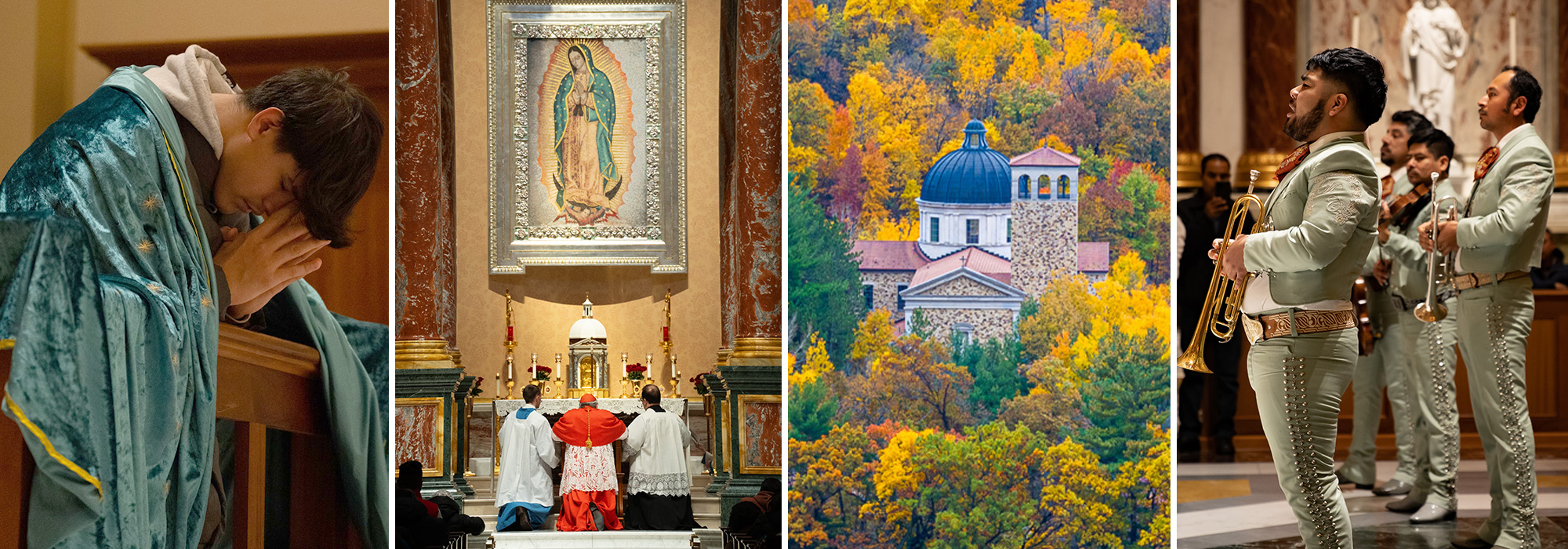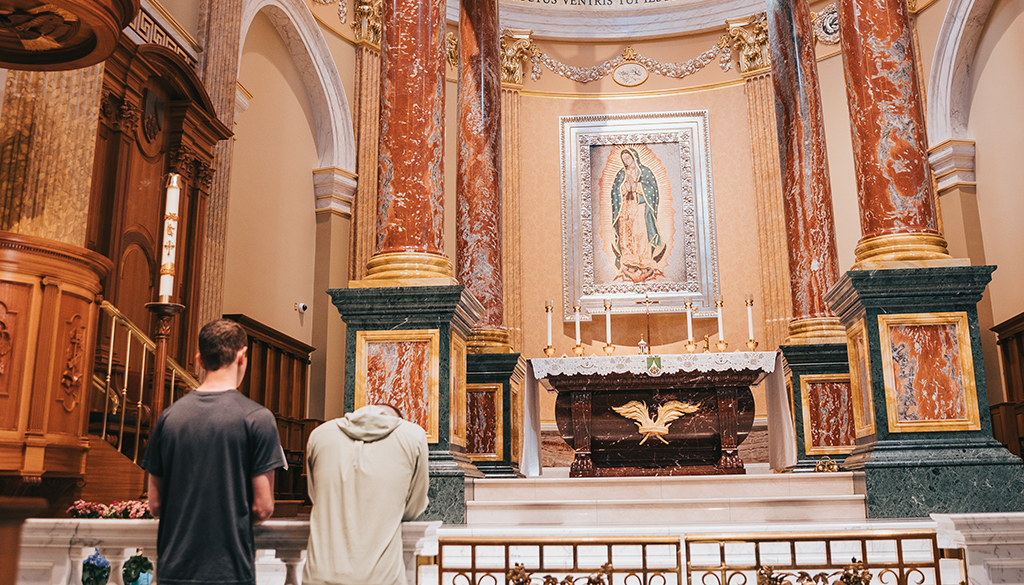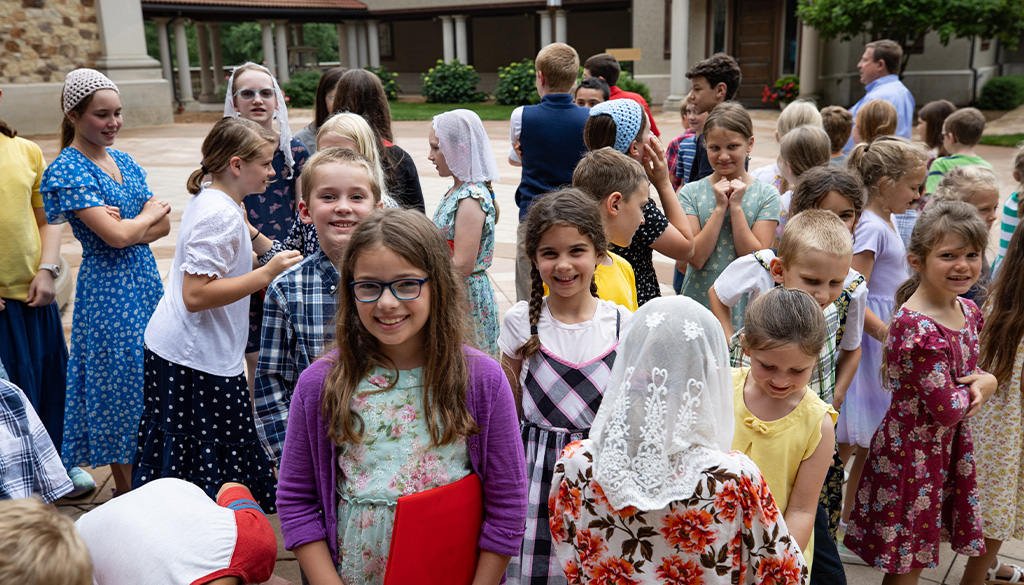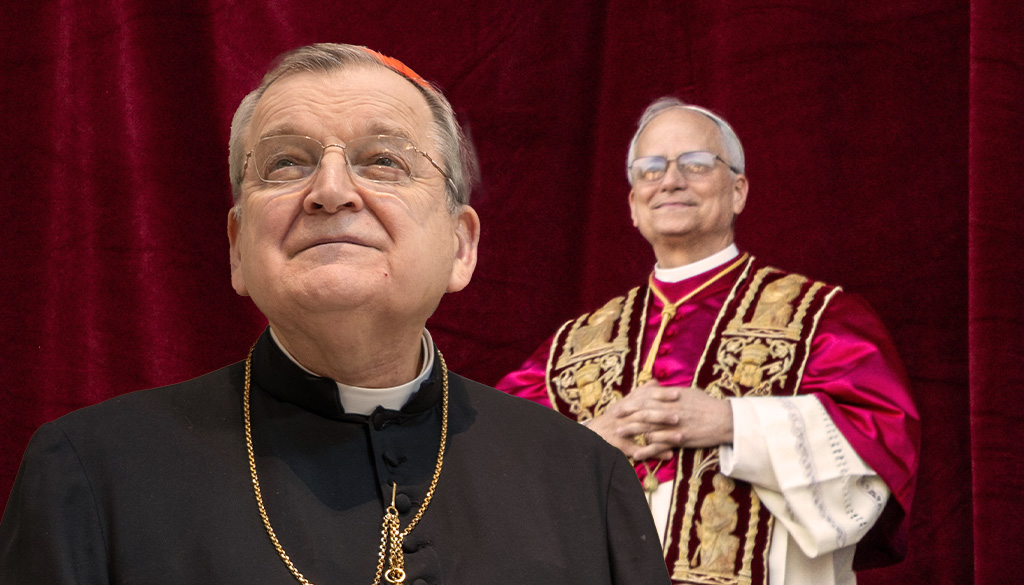Truth, Goodness, and Beauty
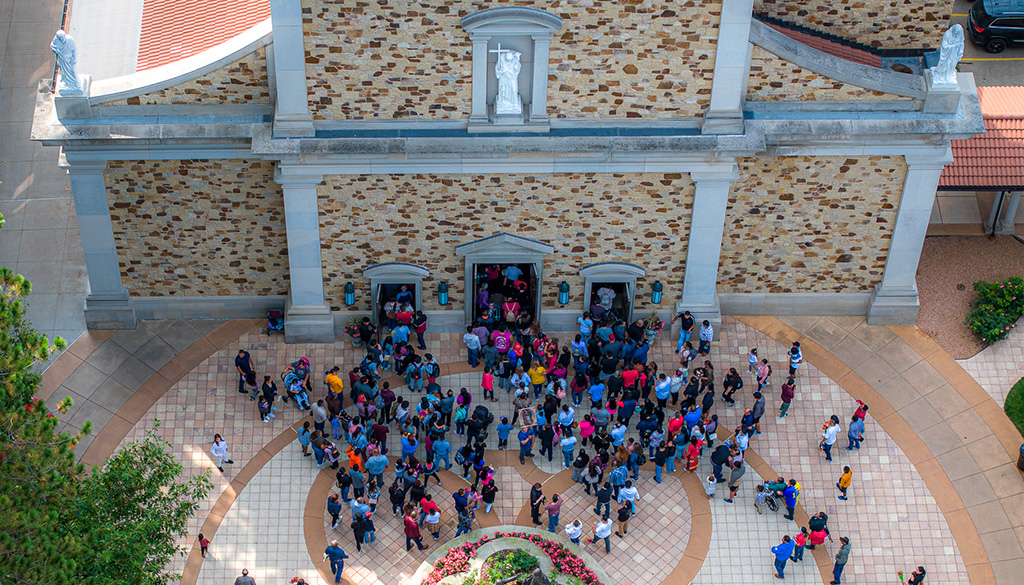
“For just as the body is one and has many members,
and all the members of the body, though many, are one body,
so it is with Christ.” —1 Corinthians 12:12
Saint Paul wrote that verse above as a part of a much larger context that urged unity in the peace of Jesus Christ. He uses the image of the human body as an example of harmonious integration that is accomplished without will or conscious control. “God has so adjusted the body, giving the greater honor to the inferior part, that there may be no discord in the body, but that the members may have the same care for one another” (v. 24-25). We are members of the Mystical Body of Christ, yet in that union, we are also significant individuals who have the opportunity by grace to cooperate in the plan of God for the salvation of the world. Another way to look at it is that, because God willed the existence of each person, each person is a thread in the tapestry of God’s design for the salvation of souls and the re-creation of the cosmos.
Cooperating in Salvation History
While this is undeniably true for individuals, it is also reasonably true for institutions and groups within the Church. EWTN, Catholic Answers, Ascension Press, Word on Fire, FOCUS, Dynamic Catholic, the St. Paul Center for Biblical Theology—these are but a few of the groups that, it seems, are cooperating in salvation history according to God’s design. Each of these groups is meeting the aspirations of the Second Vatican Council fathers, who urged in Lumen Gentium greater participation of the laity in the life of the Church and in the salvific mission of Jesus Christ.
“Upon all the laity, therefore, rests the noble duty of working to extend the divine plan of salvation to all men of each epoch and in every land. Consequently, may every opportunity be given them so that, according to their abilities and the needs of the times, they may zealously participate in the saving work of the Church.”
Lumen Gentium, 33
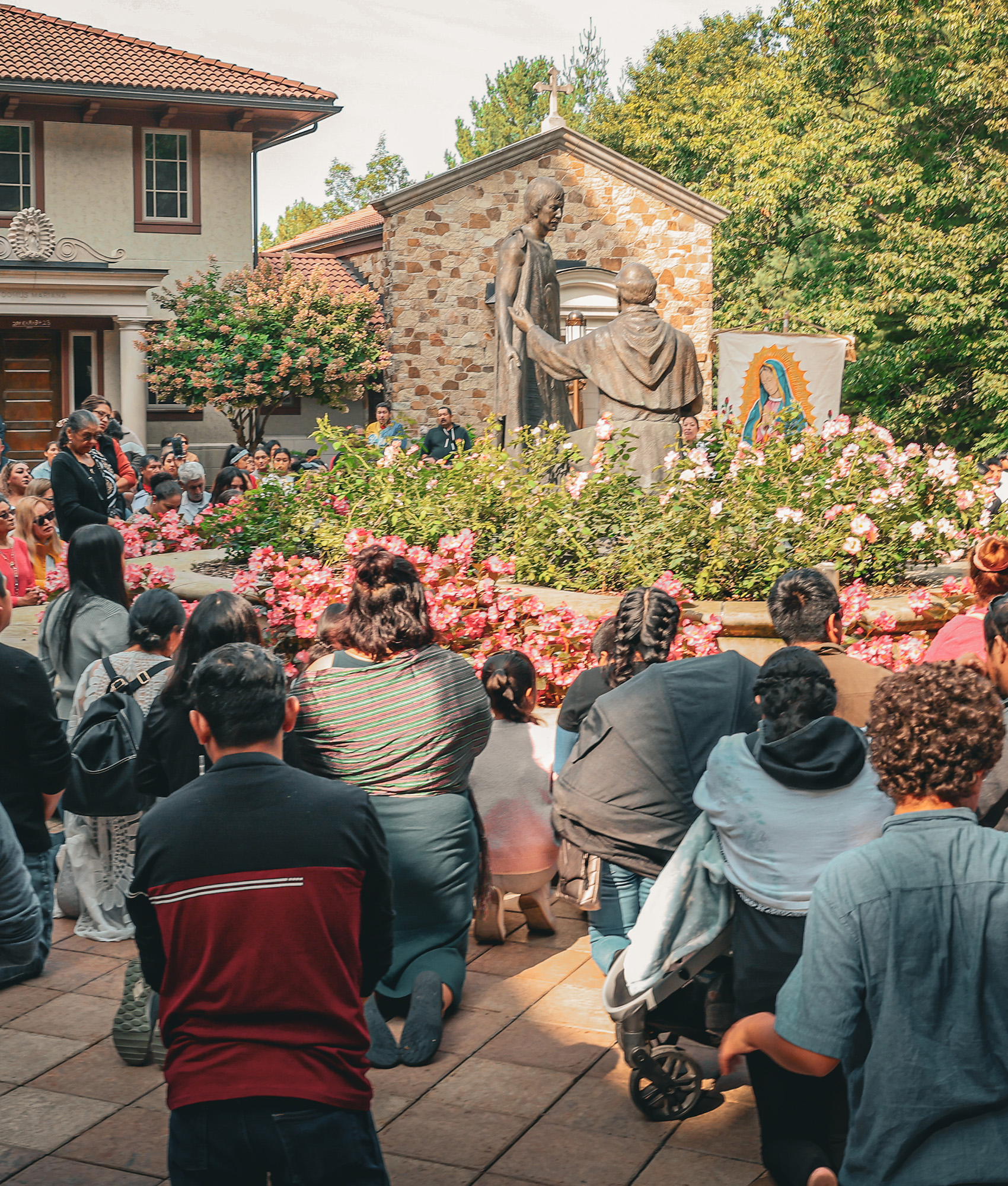
Apostolate
While the principal commonality of most Catholic organizations today, such as those mentioned above, is the zealous participation on the part of the laity, another common trait of those organizations is that they are all apostolates in a very ancient sense. Apostolate comes from the word apostle, which in Ancient Greek (apóstolos) means “one who is sent forth.” In the ancient world, an apostle was like a king’s emissary or messenger whom he sent out to deliver a message. At the conclusion of the Gospel of Matthew, Christ our King sends forth His apostles in the Great Commission to deliver the Good News of salvation from sin and ransom from death: “Go therefore and make disciples of all nations, baptizing them in the name of the Father and of the Son and of the Holy Spirit, teaching them to observe all that I have commanded you” (Matthew 28:19-20). In Our King’s Commission, He sent forth not only those apostles and disciples present in that passage, but through their commission, Jesus also commissions each of us to go out into the world as His emissaries to deliver His message, His Good News, His Gospel. Catholic organizations do the same, each in their own way: EWTN with news and other round-the-clock catechesis programs, FOCUS with domestic missionary activity, the St. Paul Center with book publishing, etc., each a unique member of one commissioned Christian corpus.
Yet the Shrine of Our Lady of Guadalupe is different.
Apostles and Pilgrims
Although the Shrine is, of course, a part of the redeeming work of Jesus Christ in cooperation with the intercessory activity of the Blessed Virgin under the title of Our Lady of Guadalupe, the Shrine is not “sent out” because the Shrine is not an apostolate. On the contrary, the Shrine is (to employ a voguish phrase) a destination location. In other words, the Shrine does not go out into the world to tell the Gospel; rather, people come to the Shrine on pilgrimage to receive the Good News. That is the core distinction between the Shrine and the majority of other Catholic organizations. Apostoles go out into the world. Pilgrims come to the Shrine from the world. Apostles journey to inform others about Christ. Pilgrims journey to the Shrine to conform themselves in Christ. Apostles travel to announce a life-changing Gospel. Pilgrims travel to the Shrine to renounce lives changed by the Gospel. Apostles go to bring the extraordinary to the ordinary. Pilgrims leave the ordinary for the extraordinary at the Shrine of Our Lady of Guadalupe.
Here is told . . .
Our Blessed Mother recognized this distinction between apostle and pilgrim when she appeared to Saint Juan Diego in Guadalupe, Mexico, in 1531 to bid the local bishop to build a “sacred little house.” The building of what would later become the Basilica of Our Lady of Guadalupe was not to send people out into the world but to welcome pilgrims in from the nations.
“I want very much that they build my sacred little house here, in which I will show Him, I will exalt Him upon making Him manifest, I will give Him to all people in all my personal love, Him that is my compassionate gaze, Him that is my help, Him that is my salvation.
“Because truly I am honored to be your compassionate mother, yours and that of all the people that live together in this land, and also of all the other various lineages of men; those who love me, those who cry to me, those who seek me, those who trust in me. Because there at my sacred house truly will I hear their cry, their sadness, in order to remedy, to cure all their various troubles, their miseries, their pains.”
Nican Mopohua, nos. 26-32
Inviting Pilgrims
Our Lady, at places of pilgrimages like the Basilica and the Shrine, offers a sacred space for pilgrims to encounter Our Lord and for Our Lord to fulfill His promise, first through the prophet Isaiah, “Come, everyone who thirsts, come to the waters; and he who has no money, come, buy and eat! Come, buy wine and milk without money and without price” (Isaiah 55:1), and then directly from His Sacred Mouth in the Gospel of Matthew, “Come to me, all who labor and are heavy laden, and I will give you rest” (Matthew 11:28).
Sharing Our Lord and Our Lady’s invitation to come to Him, especially on pilgrimage, is a critical part of the work of the Shrine staff. To achieve this goal, the Shrine has developed several outlets of information, such as the Salve Newsletter, events the blog, YouTube, as well as Facebook and Instagram. Recognizing the importance of disseminating Our Lady’s message for pilgrim ministry, the Shrine has even recreated some of these outlets in Spanish, such as the Spanish website, the Spanish YouTube channel, and the Spanish Instagram page. Each of these are channels through which the Shrine expresses herself to the world as a means not only of informing the world of the Shrine but also inviting all people to come to the Shrine on pilgrimage.
Yet the fulcrum for each of these vehicles of expression has remained the Shrine’s blog. Since its establishment in 2022, the blog has been the home where articles and videos are referred to in emails, newsletters, video descriptions, social media posts, and more. In a very real way, while the Shrine is not an apostolate, the blog has become an apostolate since it goes out into the world on behalf of the Shrine, relaying messages from the Shrine, expressing the Shrine’s mission and ministry, representing Shrine culture, and being an invitation to people to come to the Shrine on pilgrimage.
To encapsulate all these dimensions of its work more fully, the Shrine blog has been renovated into the Shrine Journal.
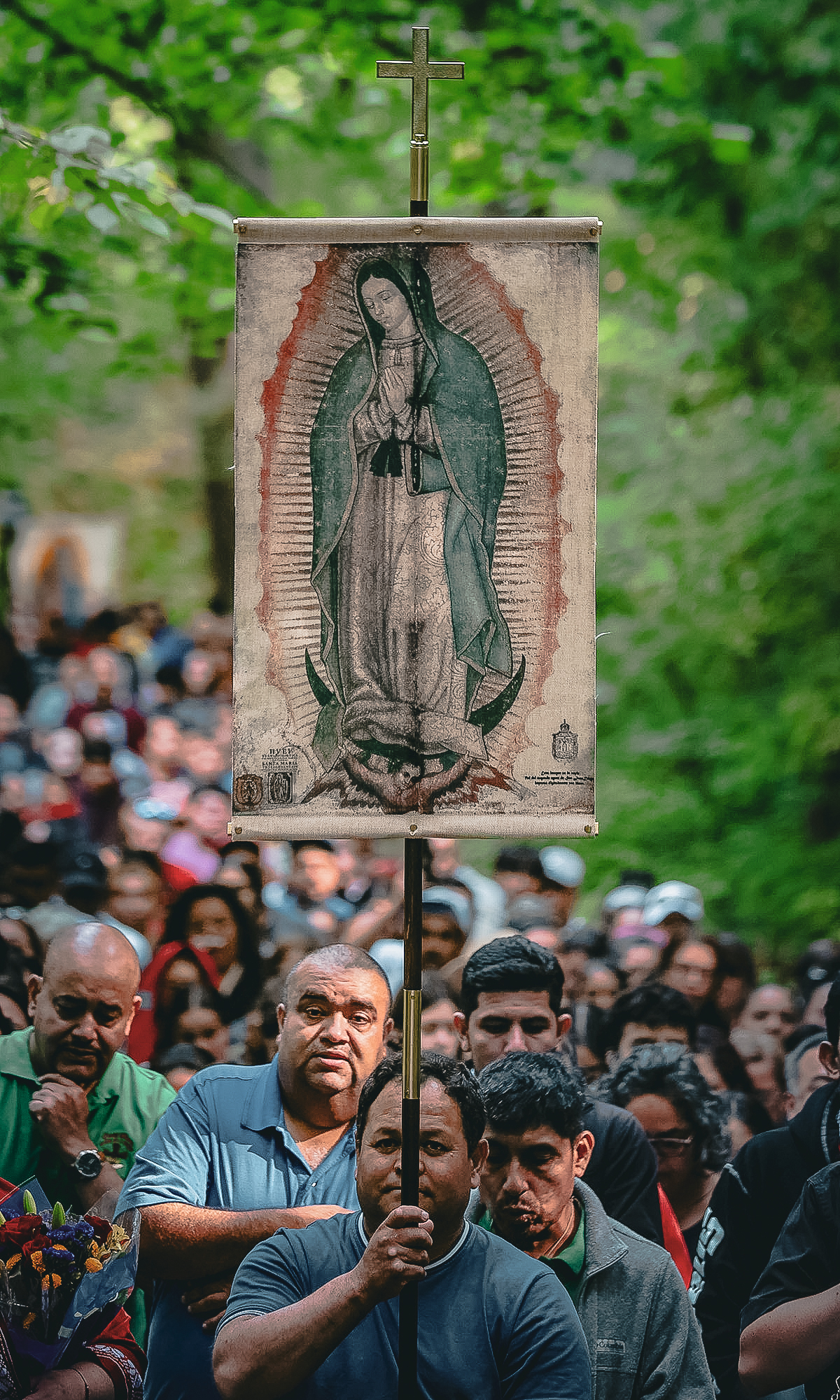
The Shrine Journal
On the Journal’s main page, just below the title, is the subtitle “Here is told . . .” This is the English translation of the first words of Antonio Valero’s story, the Nican Mopohua, about Our Lady of Guadalupe told to him by Saint Juan Diego. By telling of the Shrine’s culture, of pilgrimage experiences, of messages from the Shrine’s founder, Cardinal Burke, as well as the Shrine’s religious, the Shrine Journal carries on the work of telling the story of Our Lady of Guadalupe.
Truth, Goodness, and Beauty
The Journal features three main categories: Truth, Goodness, and Beauty. Referred to as “transcendentals” in philosophy and theology, these three categories are considered to be defining characteristics of God and the perfection of the human soul. They are called “transcendentals” because, as with God, the fullness of their true reality transcends the grasp of human intellect. To quote Saint Paul again, in the same way that we see the reality of God “in a mirror dimly” (1 Cor 13:12), we see the fullness of Truth, Goodness, and Beauty. The Catechism of the Catholic Church compares all that the human soul truly desires with all that God truly is. “All creatures bear a certain resemblance to God, most especially man, created in the image and likeness of God. The manifold perfections of creatures—their truth, their goodness, their beauty—all reflect the infinite perfection of God” (CCC, 41). Accordingly, the three categories for the Shrine Journal—Truth, Goodness, and Beauty—are intended to express the mission and ministry of the Shrine, that is, to bring pilgrims to Our Lady so that she can bring them to her Divine Son. In this way, the Shrine Journal brings them to her by showing them the perfection that the human heart desires. While all three of the menu options feature videos and articles, each of them features unique dimensions of Shrine life and culture. The Truth menu option features topics such as Catechesis, Evangelization, other Shrine Apostolates, and Prayer. The Goodness menu option features such topics as Pilgrimage, Conferences, Retreats, Tours of the Shrine, Relics, and Pilgrim Testimonies. The Beauty menu option features the Shrine’s Sacred Music, Art, Architecture, and more. By selecting one of the menu options, the articles and videos are filtered accordingly.
Exciting New Look
Finally, the overall look of the Journal has been made distinct from the rest of the website, featuring an alternation of black and white backgrounds and texts. This exciting new look is not only unique on the Shrine’s website but also distinct among all other Catholic media, setting the Shrine apart with that special distinction of the Mystical Body of Christ, as Saint Paul described in the above quotation. “God arranged the members in the body, each one of them, as he chose. If all were a single member, where would the body be? As it is, there are many parts, yet one body” (1 Cor 12:18-20). Indeed, the message conveyed in the Shrine Journal is distinct from the apologetics messages of other outlets. Through articles and videos on various topics, the Shrine Journal is at its heart an invitation to come to Our Lady in La Crosse, Wisconsin, to seek our compassionate mother, to love her, and to trust that she hears our cry, our sadness, and by her maternal love, provide the remedy and the cure for all our various troubles, miseries, and pains. The Shrine Journal shows how extraordinary an ordinary life is when on pilgrimage.
